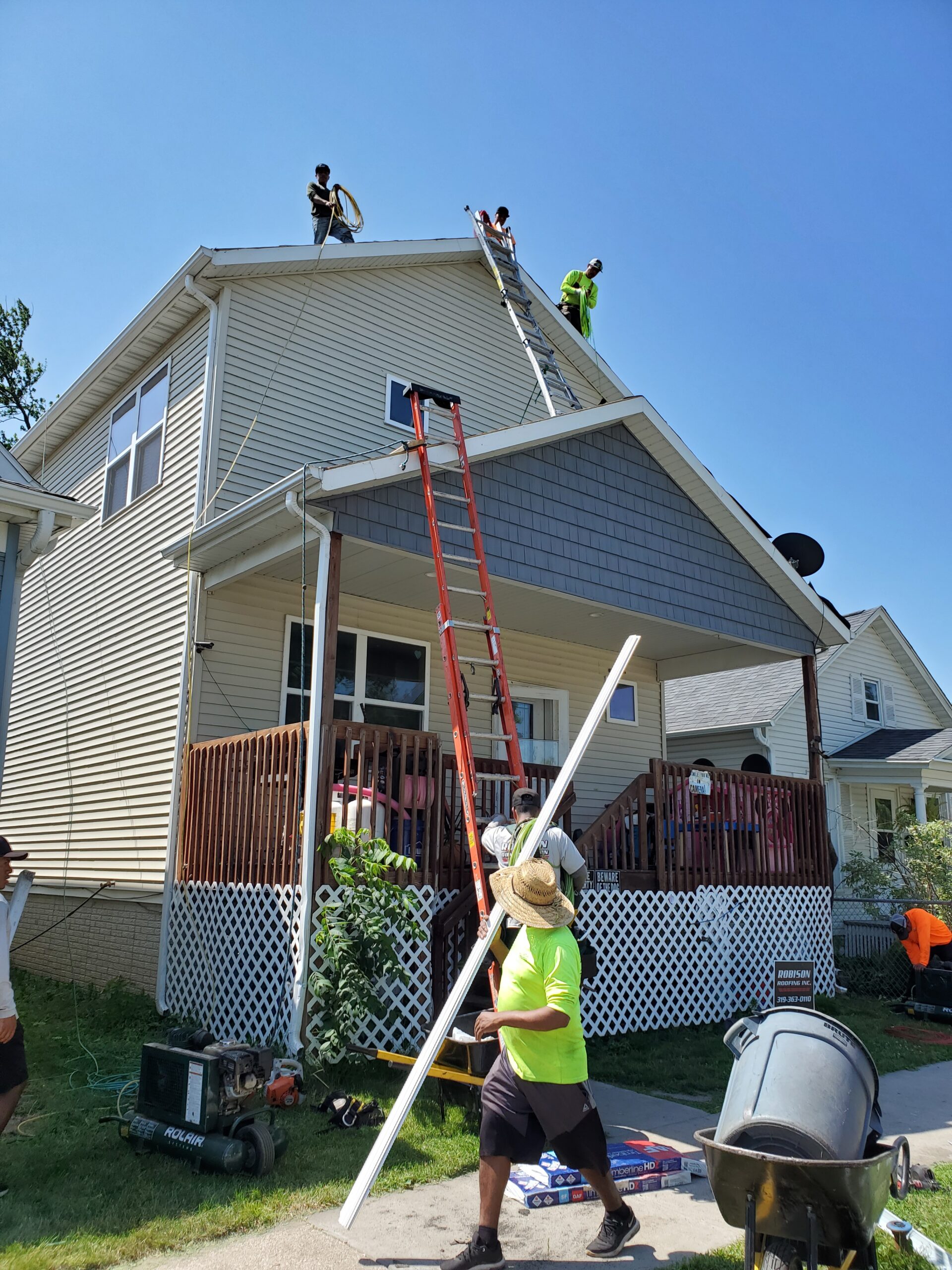October 10, 2022 | Housing
PATCH 2.0 – Long-Term Derecho Recovery
Every phase of disaster response is different. The first phase of immediate response is often the most emotionally driven and boosted by adrenaline. The next phase is long-term recovery, which eventually moves into rebuilding.

Every phase of disaster response is different. The first phase of immediate response is often the most emotionally driven and boosted by adrenaline. This is when the whole community turns out. Neighbors come out to help neighbors. People drive in from other towns. National disaster response organizations bring heavy equipment. It’s the boots on the ground phase that can sometimes resemble a military operation, full of both chaos and top down response. As you can see in looking around town, we’re well past that phase of derecho recovery.
The next phase is long-term recovery, which eventually moves into rebuilding. This phase is really tricky. Often, we’re dealing with longer-term, chronic issues that are both personal and societal. Private contributions of money and time generally begin to fade as professional services and government funding kick-in.
Within PATCH, we often talk about the 1.0 and 2.0 versions. PATCH 1.0 developed right after the disaster as several non-profits came together to support recovery efforts, primarily focused on housing. We engaged hundreds of volunteers and did a lot of stop gap efforts to make life bearable and prevent ongoing deterioration of homes. We tarped, patched, fixed broken windows and steps, and removed trees.
This construction season, we’ve been in PATCH 2.0. We’ve still been working on more than one-hundred projects. And the projects are more complicated. Take Jane and Paul’s mobile home (names changed to protect homeowners). It is an older home that had a few issues before the derecho. For the last two years, Jane and Paul have been on a rollercoaster ride with FEMA and other recovery programs.
Initially, with a shortage of affordable housing, the goal was to do the minimum to make their home livable. The debate has been over what the best long-term solution is. Is their mobile home worth repairing? Is it better to keep people in a neighborhood where they have friends and community or move them to a different setting? As a couple battling disabilities and living primarily off of social security payments, people wanted to make sure they wouldn’t be put in a situation where they eventually wouldn’t be able to afford rent or have the support they need. After many conversations, it was decided that the best option would be a used mobile home in a different park. Now, it is a matter of finding the right home and community.
Another PATCH 2.0 family has issues of trust and mental health. Because their house is nearly unlivable, at first they didn’t want anyone to come inside. They feared the home would be condemned. Even before the derecho, they had been struggling with the recent death of their husband, who had started demoing the interior of their house. Now that he was gone, so was his paycheck and construction abilities. The house was left on pause and derecho damage just added to the remaining partner’s feelings of being overwhelmed. Slowly, we’ve gained their trust and are developing a plan to move the home forward.
These are just two of the many, many situations Matthew 25 is dealing with as we move through the rebuilding phase. At this point, there are rarely perfect answers. Funding is beginning to be depleted. Stamina of homeowners and responding organizations is beginning to wane. At Matthew 25, we find that in addition to having construction expertise, we need social work skills buoyed by faith.
Since this is our second disaster where we’ve helped lead the response, we’ve learned a few things about the recovery process. We know we won’t help everyone. We also know that our responses won’t all be perfect. But, we also know as an organization that we’ve developed a unique skill set that combines compassion, construction, personal relationships, advocacy, faith and grit. The community has learned to trust us for the long-haul, knowing we won’t walk away just because things get difficult or the answers aren’t easy. We will do the best we can and trust in God to work in people’s lives even when we’re gone. And we know that the team of all of you that surrounds us, will continue to provide the necessary spiritual and financial support that empowers us to continue helping others.